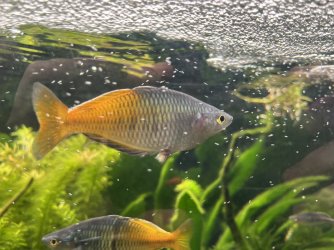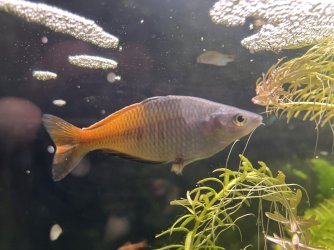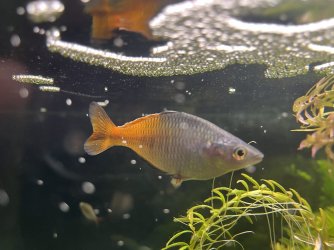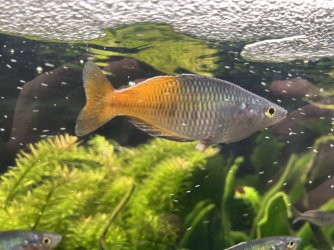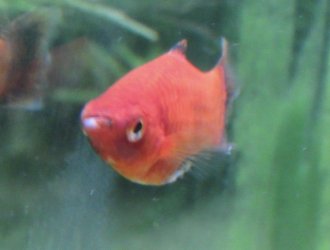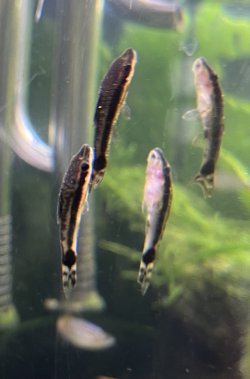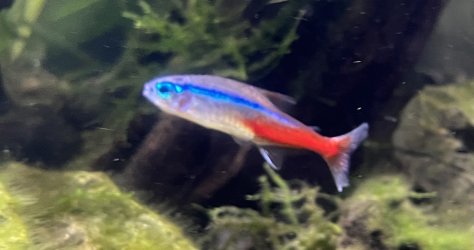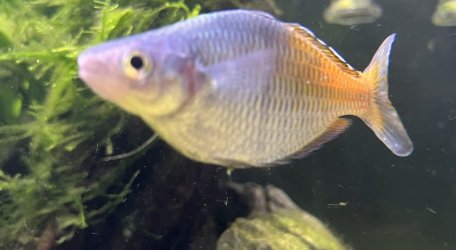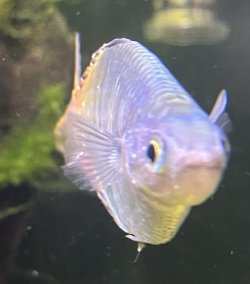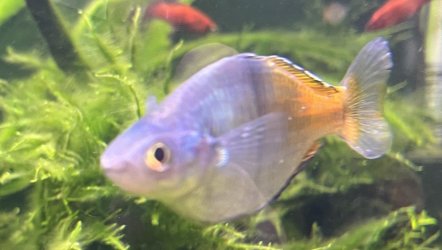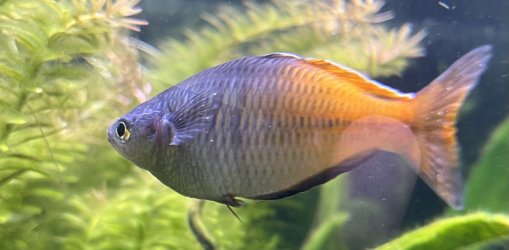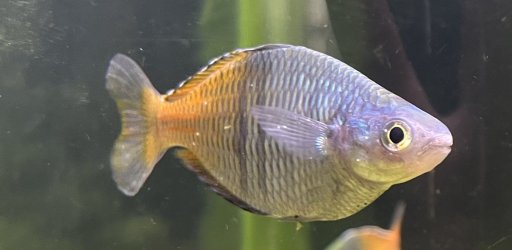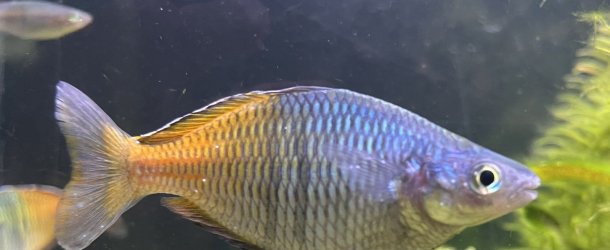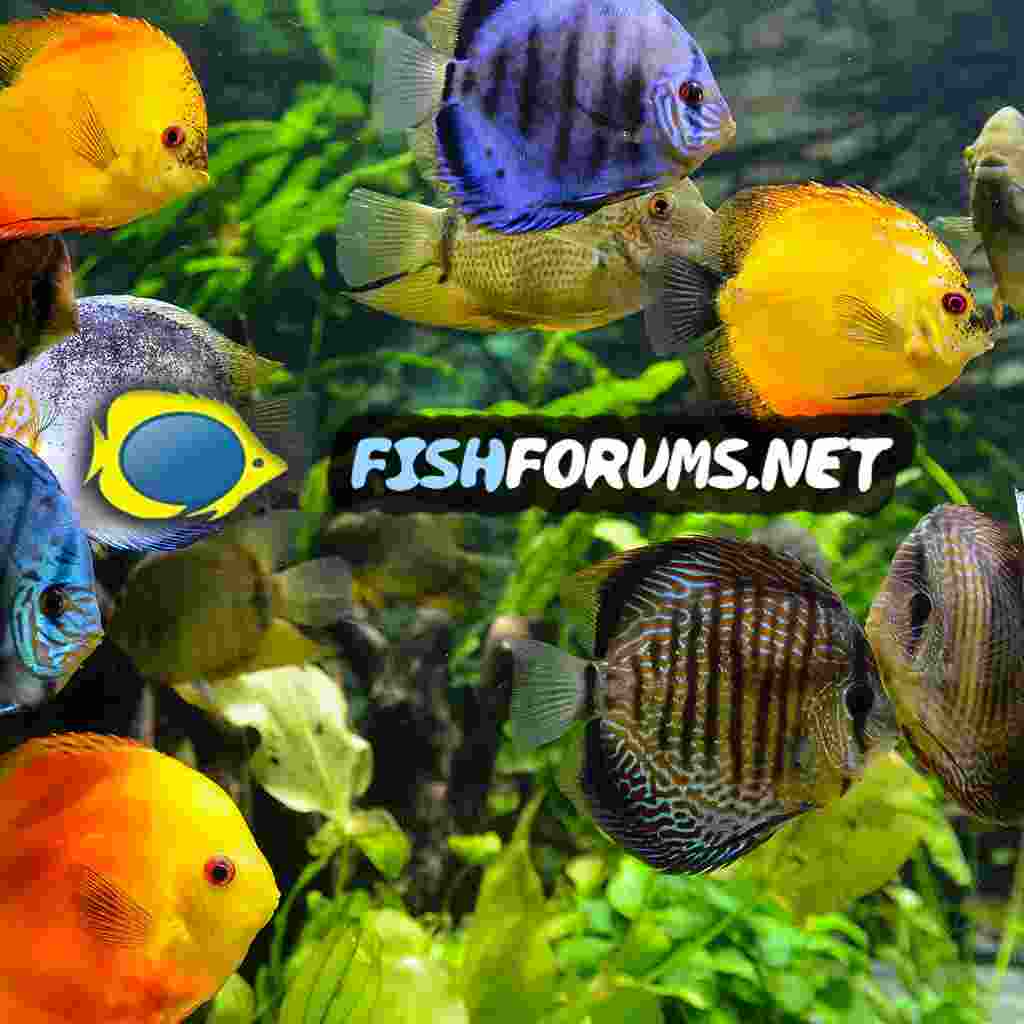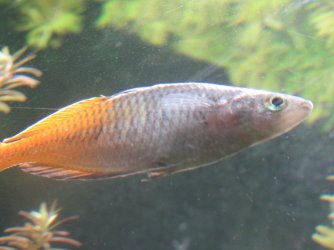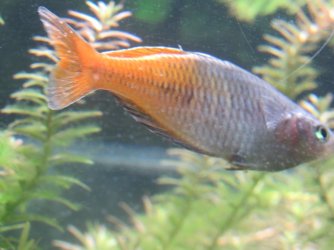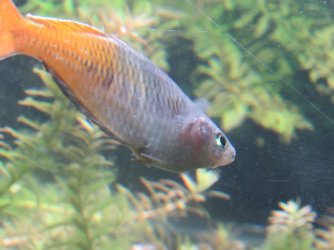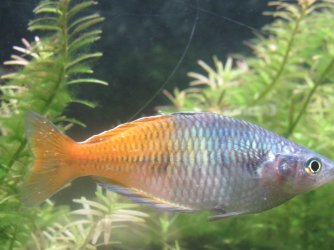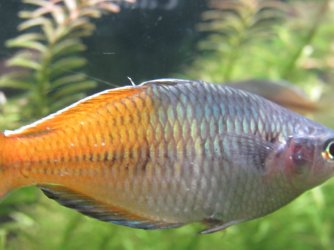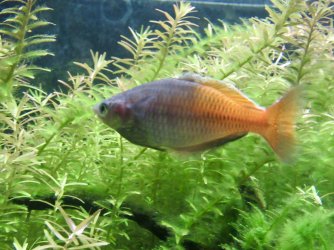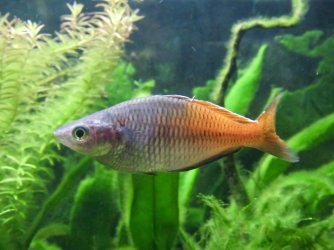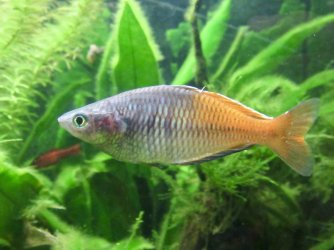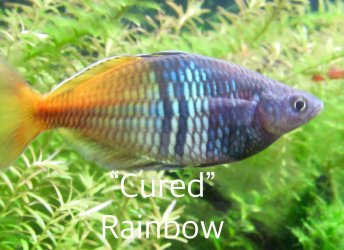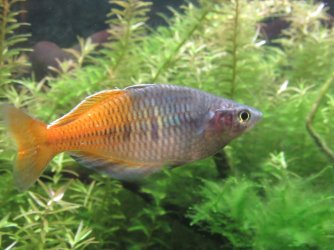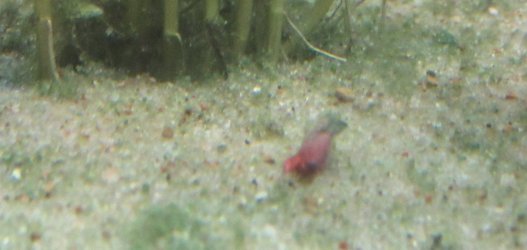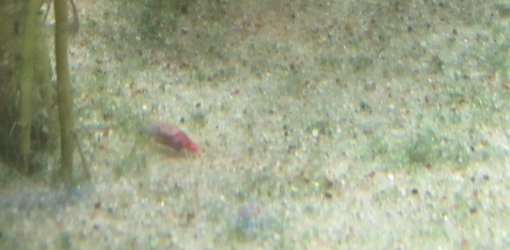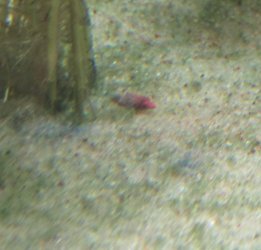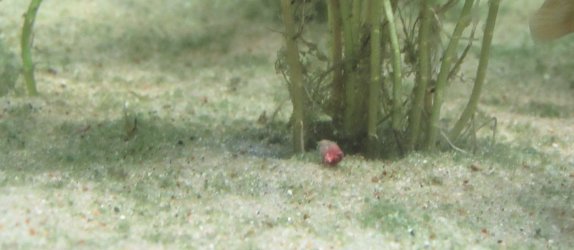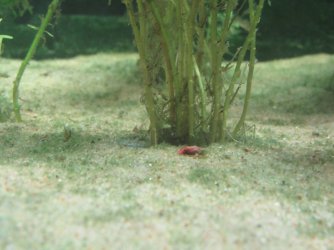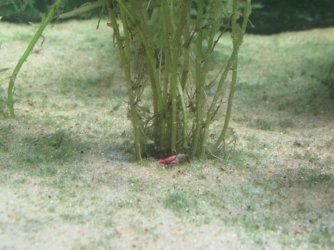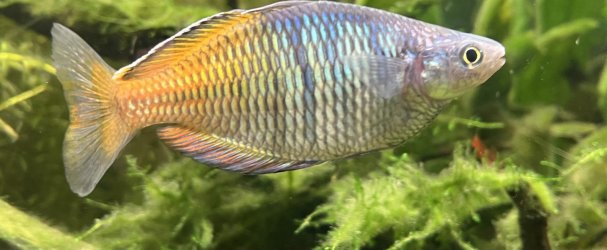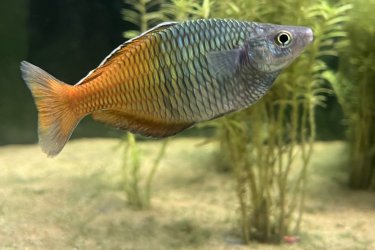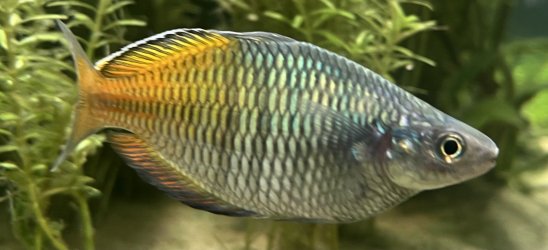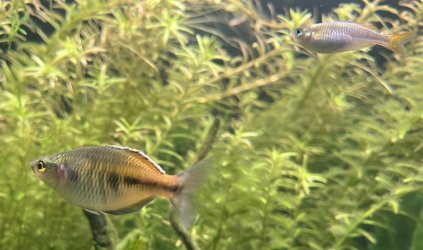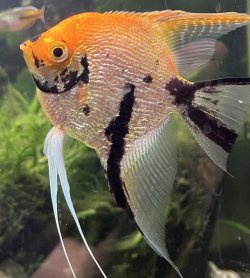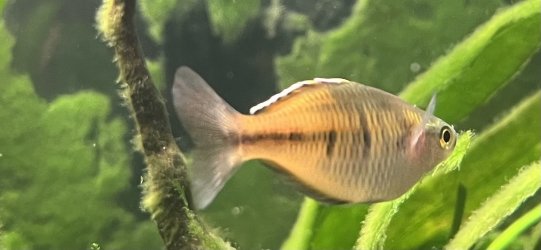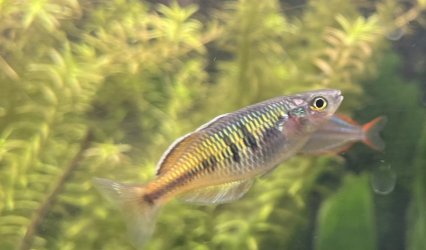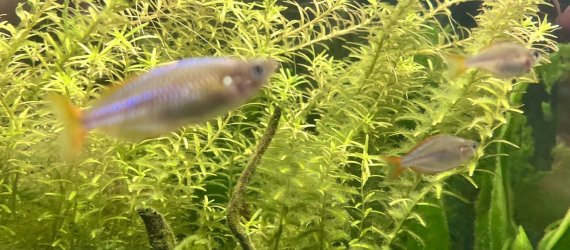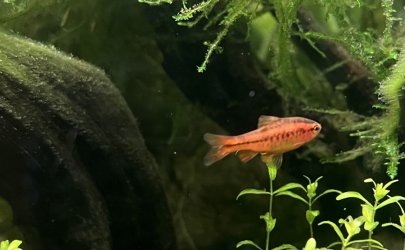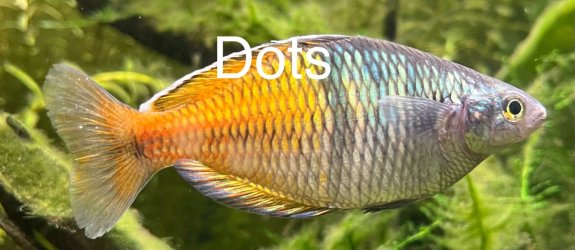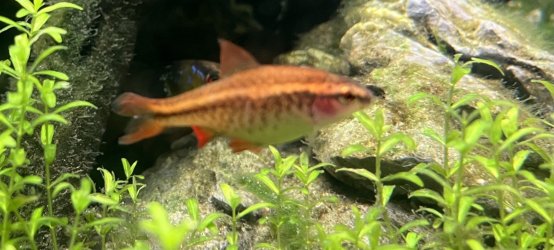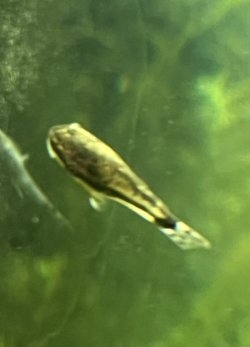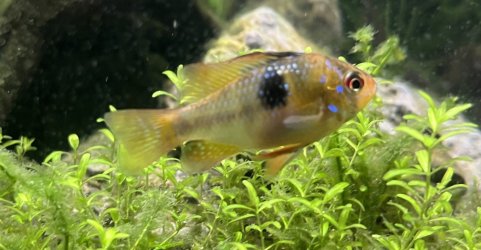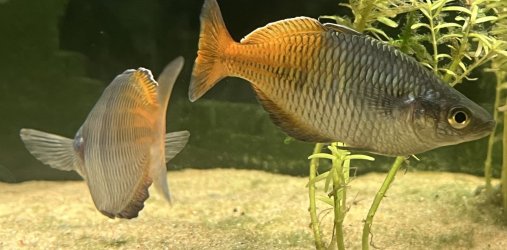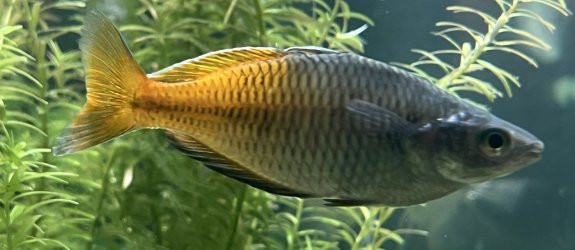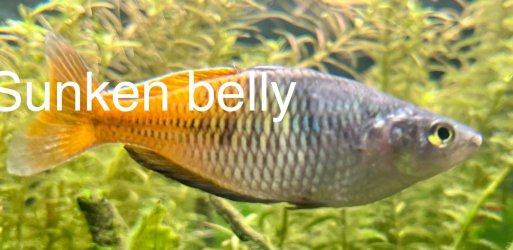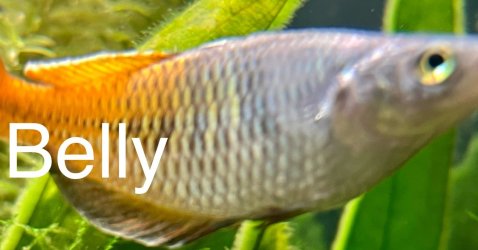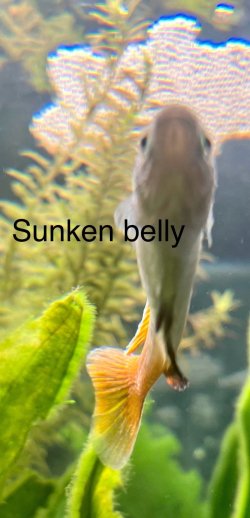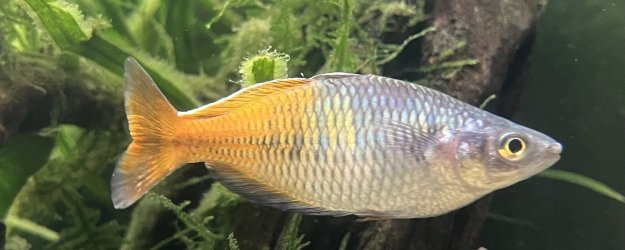christian_b23
New Member
Hi everyone. Recently, I introduced some new fish after a 2-week quarantine process, which included a quarantine medication trio consisting of Fritz Maracyn, Aquarium Solutions Ich-X, and Fritz ParaCleanse. Upon observing them and making sure they were healthy, I added them to my main tank. (90 gallon).
However, in the past few days, I've noticed that many of the fish in the tank are now showing bacterial symptoms of Epistylis, especially considering the presence of differently-sized dots, some of which are located on the affected fish's eyes. Additionally, one of my platies is suffering from mouth rot, and there are cases of fin rot among some of the cherry barbs and neon tetras.
Also, one of my Boesmani rainbowfish had been experiencing white, thick, fuzzy poop with frayed ends. Unfortunately, it died from it, with other symptoms including, not eating heavy breathing, enlarged gills, and significant thinness before death. One of my other Boesmani rainbowfishes that are alive has the same white fuzzy poop but is not thin. It is not eating either. Despite administering prazipro as a treatment for suspected intestinal worms, there has been no improvement.
After the fuzzy poop symptom is resolved with its own treatment period, I intend to initiate treatment afterward for the bacterial symptoms involving Seachem Kanaplex administered in their food, along with salt baths, and Jungle Fungus Clear for 10 days. However, I am uncertain about how to continue to treat the white fuzzy poop as prazipro hasn't had any effect on it. I'm still unsure whether it is due to an Internal Bacterial Infection like the epistylis they have, an internal Protozoan Infection, or Internal Protozoan Infection.
Attached is picture of the affected Boesmani rainbowfish which is still alive for your reference. (The bubbles in the water are from my air pump - for the prazipro)
However, in the past few days, I've noticed that many of the fish in the tank are now showing bacterial symptoms of Epistylis, especially considering the presence of differently-sized dots, some of which are located on the affected fish's eyes. Additionally, one of my platies is suffering from mouth rot, and there are cases of fin rot among some of the cherry barbs and neon tetras.
Also, one of my Boesmani rainbowfish had been experiencing white, thick, fuzzy poop with frayed ends. Unfortunately, it died from it, with other symptoms including, not eating heavy breathing, enlarged gills, and significant thinness before death. One of my other Boesmani rainbowfishes that are alive has the same white fuzzy poop but is not thin. It is not eating either. Despite administering prazipro as a treatment for suspected intestinal worms, there has been no improvement.
After the fuzzy poop symptom is resolved with its own treatment period, I intend to initiate treatment afterward for the bacterial symptoms involving Seachem Kanaplex administered in their food, along with salt baths, and Jungle Fungus Clear for 10 days. However, I am uncertain about how to continue to treat the white fuzzy poop as prazipro hasn't had any effect on it. I'm still unsure whether it is due to an Internal Bacterial Infection like the epistylis they have, an internal Protozoan Infection, or Internal Protozoan Infection.
Attached is picture of the affected Boesmani rainbowfish which is still alive for your reference. (The bubbles in the water are from my air pump - for the prazipro)


